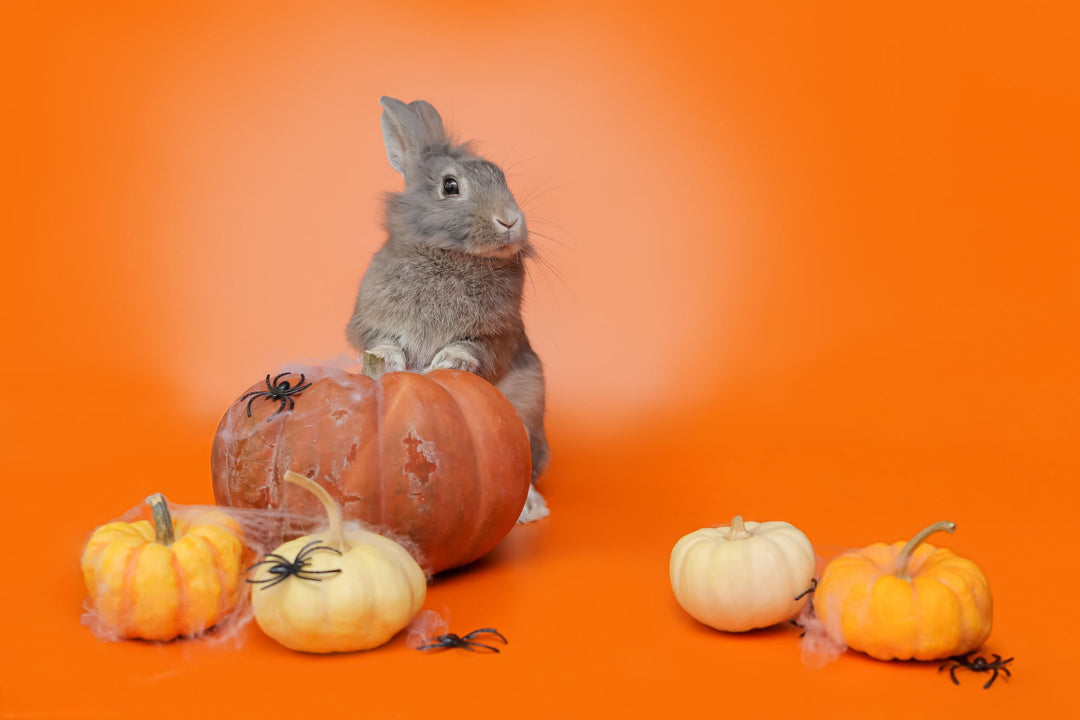Myxomatosis
My Dearest reader,
Every now and then a life well lived deserves some quiet contemplation. With good food and a warm, comfy chair, I’ve often found it to be therapeutic to remind oneself of the more… fragile aspects of life.
I had this very experience myself yesterday. I finished the last of my delectable Nibble and Gnaw marigold treats and my mind solemnly turned itself to my youth . But I also thought about friends I’ve lost and, reluctantly, how I lost them; the dreaded Myxomatosis.
Now I don’t write this to be a scaremonger. I don't want you worry about your rabbits in new untold of ways that you haven’t thought about before. I write this to let you know that of all the illnesses out there in the world the scariest is Myxomatosis.
This disease has no cure and is often fatal. Cute as we rabbits are, we haven’t the luxury of nine lives so learning about this viral infection is important.
Read on to find out what it does and how to prevent it. It's all vital knowledge to protect your beautiful bunny.
What is myxomatosis?
Myxomatosis in rabbits is a contact-spread virus that is often fatal to rabbits. This means that the key to protecting your rabbit is prevention, of which we’ll discuss more of later. This virus damages multiple areas of the body such as the skin, eyes, lungs, liver, genitals.
Upon contraction it will alter the behaviour and feeding habits of the affected rabbit. In more chronic cases, depending on the virus strain and immunity of the rabbit, lumps and nodules (myxomas) may develop on the body.
What are the symptoms of Myxomatosis?
Please remember! Within hours or days of contracting the myxoma virus, rabbits will show signs of feeling unwell. So should you happen to see these signs early a trip to the vets to make sure is an absolute must. More vivid symptoms of myxomatosis include:
- Swelling around the eyes, face, ears and genitals
- A runny nose
- Skin lumps, ulcers and scabs on the face and body
- Low energy (lethargy)
- Difficulty eating or drinking
- Breathing problems.
- Hot to touch (high temperature/fever)

How can I prevent Myxomatosis?
As I stated earlier, this pox is a fatal one and there is no cure. Once a rabbit has caught it the only cause of action is supportive care. Prevention is your best defence against the virus.
The good news is that there are vaccines available. Naturally, there is no 100% guarantee of prevention so this is best used in conjunction with other measures to best protect your little loved one. To best prepare, your prevention action strike should be something like the following:
- Cleanliness – Don’t invite nasty house guests capable of carrying disease. Fleas, mosquitos, lice, flies all thrive in unclean conditions. They can be carriers for the virus so making sure your bunnies are living in a clean and stable environment is key.
- Be aware of reusing products – this point sort of ties into the one above. Remember, this virus can last for a long time on surfaces like food bowls, water bottles, hutches and so on. Keep these clean, and should you have to remove them or travel have a spare so that you don’t risk any contamination.
- Be aware of the wilderness. As someone who lives in the countryside I’m well aware of the benefits of clean air living. But there are also dangers. Should you have your loved ones in a similar locale be sure to pay attention to wild rabbits and other animals. Whilst the main danger of myxomatosis comes from airborne insects, wild rabbits are also susceptible. If your rabbit catches it, it will be a spreader of the virus. Your rabbit is a wild creature, but if domesticated it needs to stay that way for it’s own health.
What happens if my rabbit gets Myxomatosis, is there treatment?
As mentioned above, your best bet for protection is prevention. Should your rabbit contract Myxomatosis, then seeing your vet is the first point of call. At this point, your rabbit would be on palliative care and your vet might prescribe some antibiotics to prevent secondary infections and pain medication.

Can humans get Myxomatosis from rabbits?
Along with opposable thumbs, another advantage humans have over rabbits is the fact that they can’t catch Myxomatosis. If you have a menagerie of animals around then you can rest easy. All your dogs, guinea pigs, cats, birds, children and anything else are all safe from infection.
Myxomatosis in rabbits is scary for us, but it’s always good to know that humans are taking it seriously. We can tell when you're trying to help their loved ones by preventing the virus at the source. This, along with vaccinations are the best defence you can provide for your rabbit but why stop there?
I’ve always said to any one of my clients that a rabbits diet is the most important indicator of health. Even with the threat of Myxomatosis that fact is no different. Remember the wise words from my friends at the Rabbit Welfare Association and Fund. Feed dust-extracted hay to make sure your rabbit is at it’s heathiest.
And when it comes to dust free hat there is no guarantee stronger than our hand sorted, 100% dust free hay. Be sure to get your ‘try me’ box now to find out just how much it will change the mood, health and happiness of your rabbit. Come to think of it, I might open another box now.
https://nibbleandgnaw.com/products/timothy-hay-first-and-second-cut-try-me-pack




